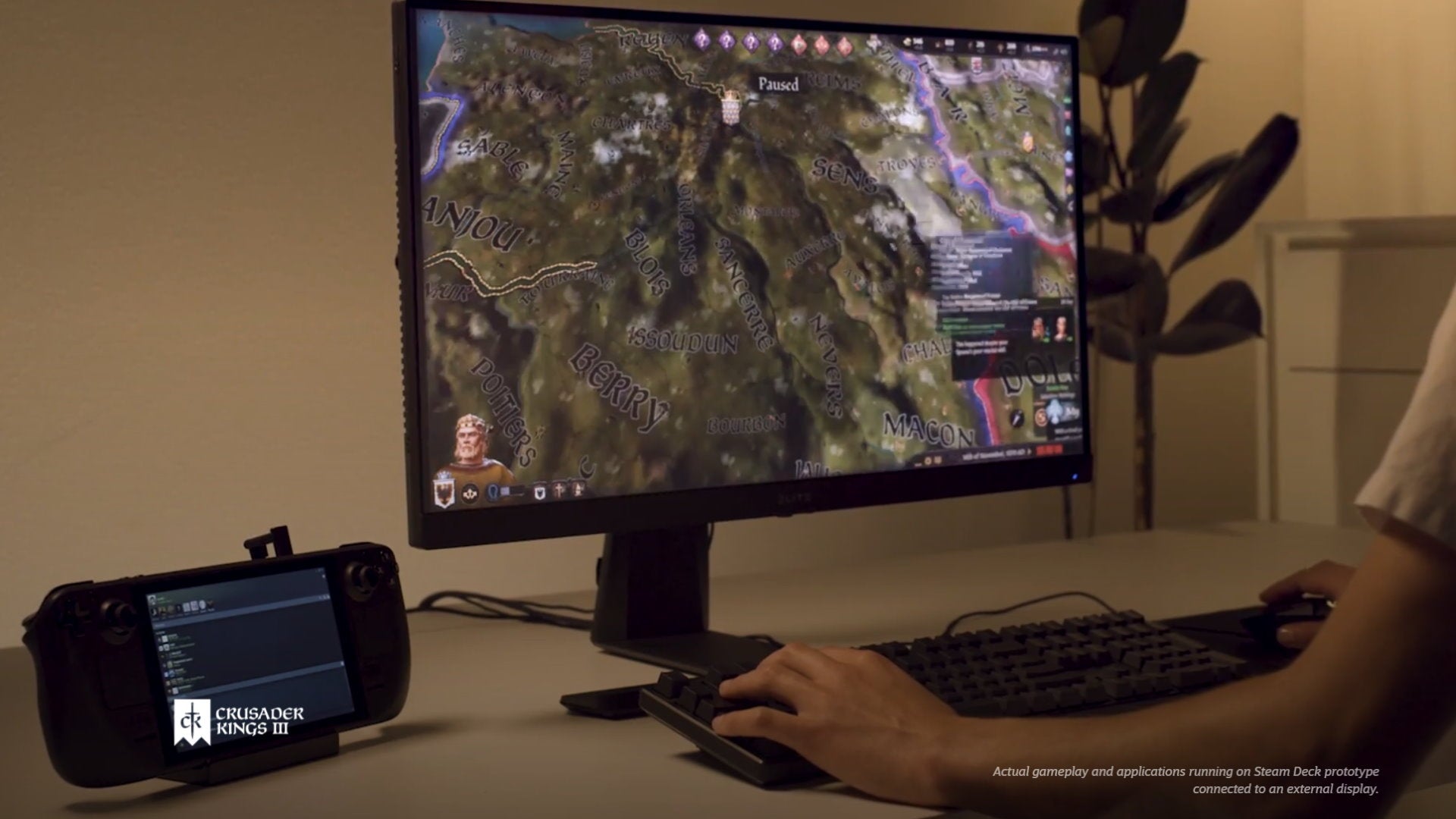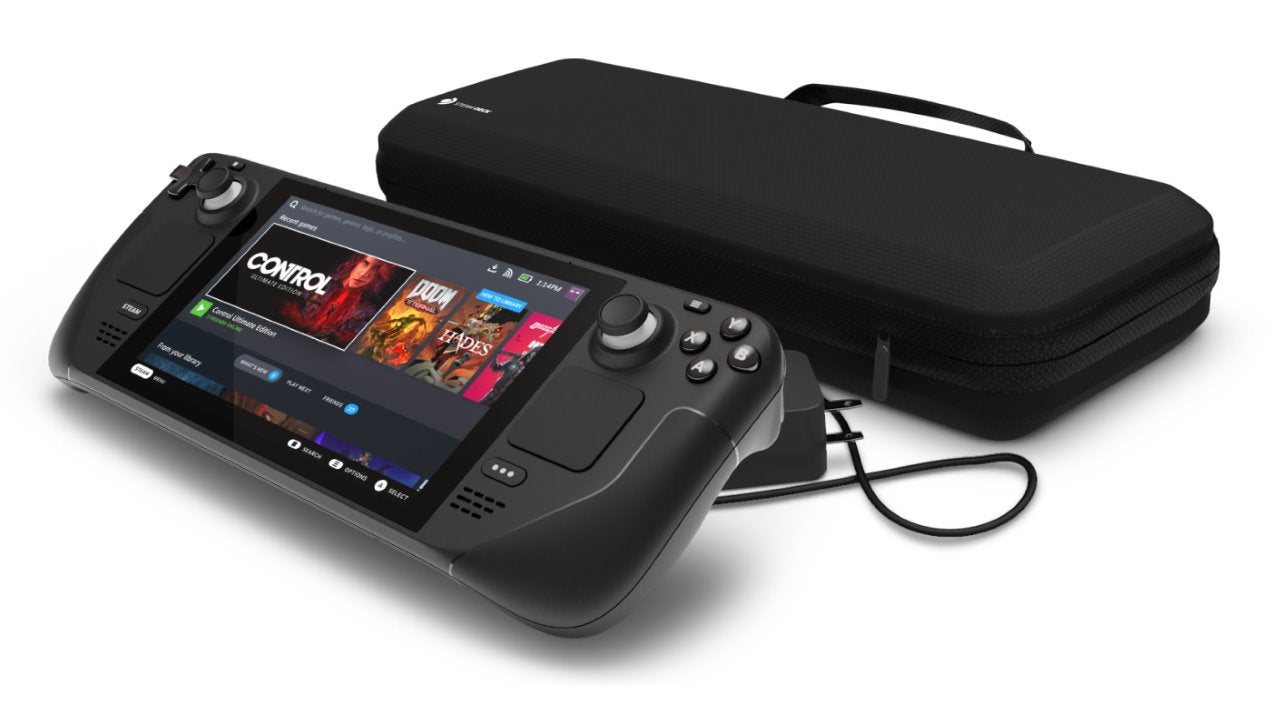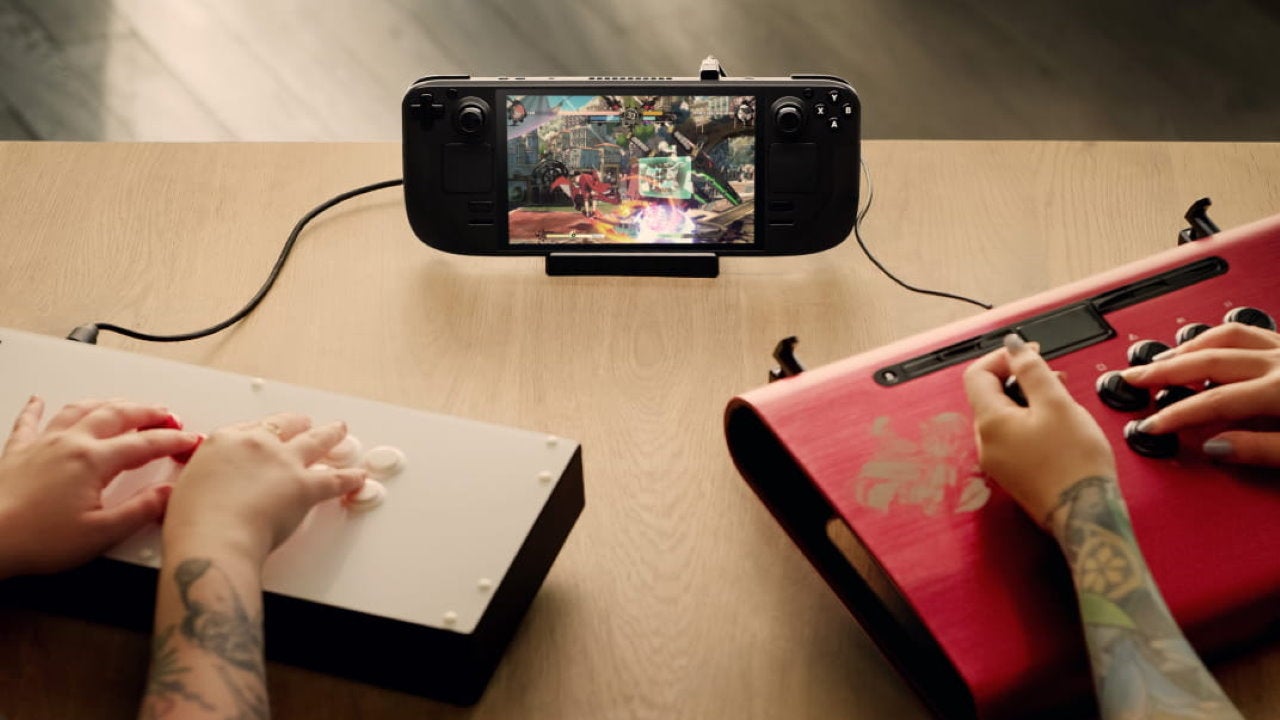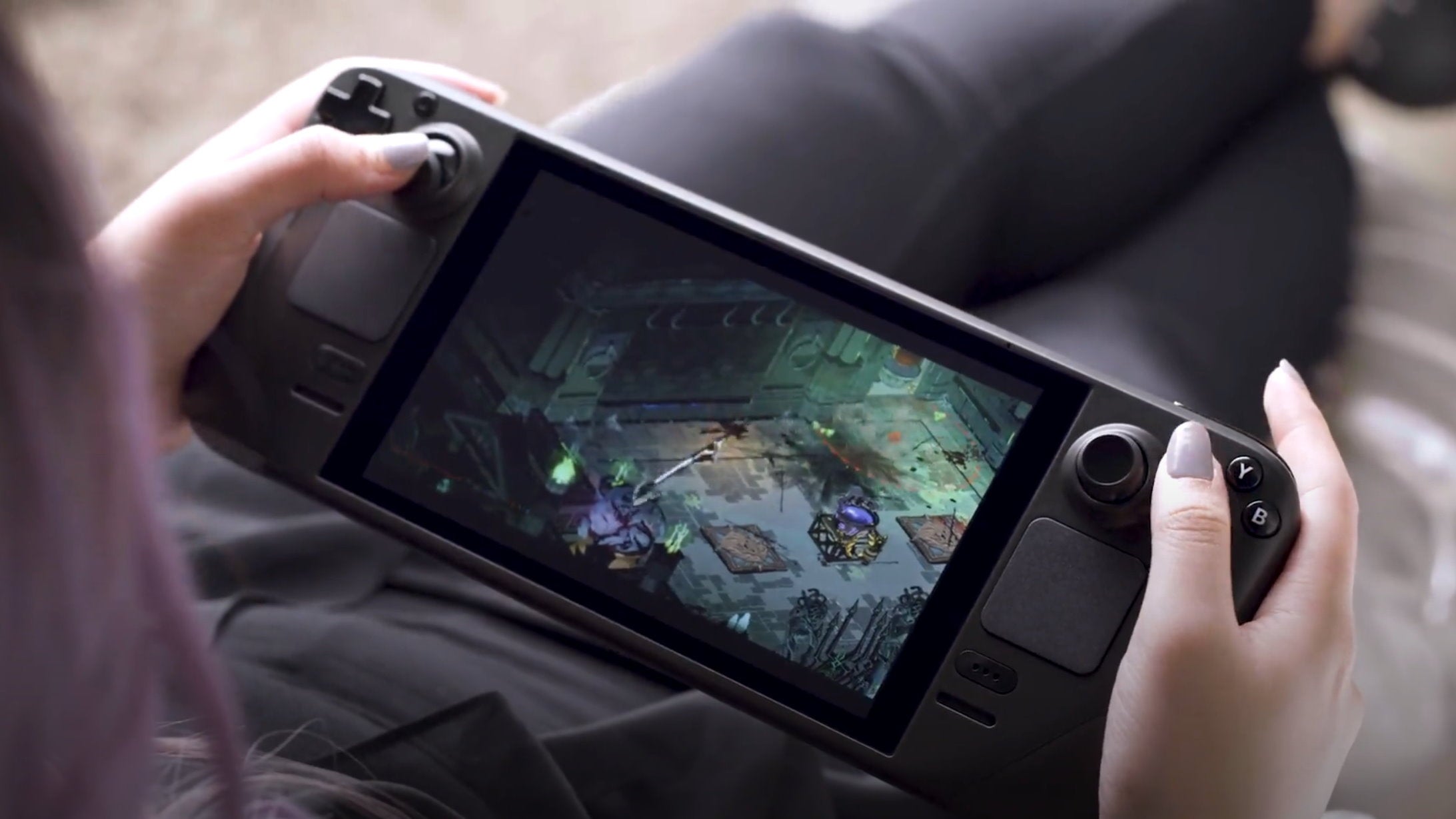
Steam Deck
As we have already reported in recent weeks, Steam Deck is not intended, at least in Valve's intentions, to be a "one shot" project. The company, led by Gabe Newell, has indeed worked on a portable console similar to the Nintendo Switch but intends to update it in the future. Greg Coomer got unbalanced on this point, in a long interview that rattled off some details of the company's strategy to allow the new hardware to survive in a market full of consoles and devices that are always different and each with its own experience of use almost. unique.As explained by Coomer, Valve intends to look at Steam Deck as an upgradeable platform. Obviously not in a short amount of time, as this would lead to some problems with the public and developers. "It would not be ideal to launch a new version every three months. However, we are already looking to the future, because we believe that this is a product with a great life ahead ", the words of Coomer declared to the virtual microphones of his colleagues at Rock, Paper & Shotgun.
Although any updates will only come later and not immediately, Coomer also wanted to talk about a feature that Steam Deck currently lacks, namely the resolution in 4K. As the designer of Valve says, at the moment this hypothesis has already been considered but it will take a very long time before we see a console with support for this resolution. “We think we will be able to achieve this result in two years time”, Coomer's words.
4K or not, Steam Deck is still preparing to make its debut on the market. The first consoles will arrive between the end of 2021 and 2022 to all the lucky buyers who have had the opportunity to book, directly from Valve's client, one of the three versions proposed. From then on, it will be easier to trace a possible future for the first portable console by Gabe Newell and associates.
Logitech Prodigy G213 mechanical keyboard awaits you with 40% discount HERE.
The Steam Deck interview: Valve's designers on all things hardware, software, and knowing when to stop
Earlier this month, I sat down with Steam Deck designers Greg Coomer and Lawrence Yang to talk about Valve's new portable handheld PC. It's without doubt one of the most exciting things to happen in PC gaming in recent years - I'm certainly looking forward to it, and I know many of you are as well. While Covid restrictions meant I couldn't go and see it in person like many other media outlets, I did get to talk with Coomer and Yang about the Steam Deck's hardware, design, and future-proofing over Zoom instead. You may have already seen a few snippets from our conversation appear on the site in recent weeks, but here's the interview in full.
In it, I ask them about the origins of the Steam Deck, what you can expect from its dedicated dock, whether 4K-capable handhelds like the hotly-rumoured Switch Pro are even realistic right now, what games they're most looking forward to playing on the Steam Deck themselves, and much more.
How's the reception been so far for you? Are you pleased, shocked, surprised by the reaction to the Steam Deck?
Greg Coomer (GC): We and the team are just generally both excited and pleased by the reaction. For us, we've been working on this for quite a while, so it's exciting just to have everybody be able to experience it. But generally, yes, we're really pleased with the response.
Lawrence Yang (LY): Yeah, internally we've been really excited about this product since its inception, and to see the world at large, the internet at large, also be excited about it is really gratifying.
At what point did you first start thinking about making the Steam Deck? You've said in the past, both in terms of your software and your hardware, that you only ever tend to do or make something if it's going to advance the ecosystem as a whole - so what was it that prompted you to start thinking 'handheld PC gaming is the future'?
GC: Actually, we've been discussing a device like this for several years, and one of the things that's definitely true about it is that it's the culmination of a bunch of different past products and explorations. Even back when we were mostly focused on things like the Steam Controller or a streaming device, it really always was a handheld PC, was really always something we were discussing back, you know, several years ago. But a bunch of things had to come true first for it to be viable in our eyes, and one of the main ones was just that we really wanted to put the Steam catalogue first.
We weren't really interested in making a handheld device that couldn't play all the games on Steam. We tossed around the idea of making something that was based on a very different architecture - you know, something that was not an x86 kind of PC-like solution - but that would have diverged quite a ways from a device that was fundamentally designed to play the games that were already on Steam.
So only just recently when we've been working with AMD did we really think it became possible to bring a product to market that had the performance envelope that was correct to play the latest triple-A games and do it really well, and do it in a small form factor without, you know, melting, and we're really happy with what we've been able to achieve. If we had tried to do it even a couple of years ago, it would have been a lot more difficult.
You've said the Steam Deck can play all games in the Steam library, but do you believe that all games are 'made' for handheld play? There's always been a distinction between handheld and big screen gaming. Was 'every game' always the goal, or was there ever any discussion about whether it could just be the 'ultimate indie game' machine?
GC: Although we did discuss versions of the device that would be more appropriate for, say, lower spec games, that was never really a prominent thrust of our work. It wasn't really interesting to a lot of people who work here.
LY: Yeah, I would agree. We wanted a device that would be powerful enough to handle anything that you threw at it, and if you wanted to play a really high fidelity game on it, you could. That said, you're right, some games are better or designed specifically for controllers, and those kinds of games will just naturally play really well on Deck. There are other games that were maybe designed with mouse and keyboard in mind, and for those kinds of games we have additional inputs like the trackpad, gyro and the back buttons, and the touchscreen, which can help to fill that gap, and if developers want to take the extra step and also integrate Steam Input, that's another way those games can be played better. And again, it's like a PC, so if a customer wants to plug a keyboard and mouse into it to play those games that way, then that's also something they can definitely do.
Since the Steam Deck's initial reveal, you've said you're targeting a high-end PC gaming audience - an audience that's different to Nintendo Switch players. But I'm also curious about whether you see the Steam Deck as a budget, entry-level PC as well? Once the dock's available, do you envision this becoming a viable first PC option for people?
GC: A lot of people internally are excited about that, so yes, I think it's going to be determined by just how people generally in the real world use the device and who ends up buying it. We don't have a strong prediction that a bunch of people are going to choose it as their first PC, but as a lot of people choose to upgrade their existing PCs, we feel fairly confident that Steam Deck will be a choice that they make, because it's so capable and it does so many other things that people will just do with their default PC right now, that probably as they upgrade machines, I think Steam Deck will be one of the...
LY: Yes, I definitely think it's a viable choice. You can do everything you'd do on a PC with it, and it's just a little PC that you can plug stuff into.
 The Steam Deck can be plugged into a monitor using either its dedicated dock, or by connecting it over USB-C.
The Steam Deck can be plugged into a monitor using either its dedicated dock, or by connecting it over USB-C.Will the dock output at a higher resolution?
GC: It does, yeah. It delivers both DisplayPort and HDMI, and the resolution goes quite a bit higher.
LY: It's not the dock specifically that lets it output at a higher resolution. You can plug any HDMI to USB-C adapter into this and it can output at 4K.
GC: That's right, any device that can convert directly from this unit will output and display at a higher resolution.
Is it possible to actually play games at a higher resolution with the Deck's current hardware?
GC: It definitely depends on the game once you go to a really high resolution. It's like any other PC in that way where if you push it hard in that direction, there are many games that would start to go way below our target frame rate of even 30fps.
LY: And just like any other PC and other PC games, you can tweak settings. If you want to output to a 4K monitor and lower the textures, it will probably run fine.
With technology moving forward all the time, at what point do you draw the line and say, 'This is it'? I can imagine there's always a temptation to wait for a better battery, a better CPU, better storage...
LY: It's like the age-old hardware question. It's always like, 'Oh, if we wait another half a year or a few months, then we can have this part instead.' But I think, like Greg said, a couple of years ago we couldn't have made this device because it would have been either too unwieldy, or too power hungry, or too hot. But because of our partnership with AMD, we're able to get this really high performance APU, we felt this was the moment that we could assemble all the parts and create this device in a form factor and performance that we're really happy with.
GC: I think the answer also to your question is particularly interesting at Valve a lot of the time, because we are relatively recently a hardware company, and our DNA is really in software where upgrading stuff, it takes as long as writing some code and shipping it on the internet. So the people who work here, you know, we've hired a ton of experts in the hardware field who have all been slowly teaching us, 'You can't really operate the same way in hardware and just upgrade things whenever you feel like it.'
So your question about when do you draw the line, I think it's often extra interesting at Valve because so many of us want to treat even this device like a platform that can just be upgraded at will, and we can just, you know, why not upgrade it every three months? Obviously, that wouldn't be the best service that we would do for game developers or customers if we tried to operate that way. We're already looking ahead to the future because we believe this is a product line that will have a long life, so of course we're thinking about what would we build next, and we're starting to make plans in those directions. But there is not a design for Steam Deck 2, but we're thinking along those lines and having conversations already about where would we draw the line for our next iteration of the device.

It's exciting that you've gone with AMD for the Steam Deck's internals, as I've always been impressed with their APUs over the years. Did you ever experiment with an Nvidia chip in any of your early prototypes as well?
GC: Yes, we've been experimenting with hardware from a bunch of companies, other GPUs and other CPU solutions, but really there wasn't something we really considered viable until we were able to actually collaborate with AMD, and they had a roadmap that included this low TDP, low power envelope, but maintaining the high performance, and it just worked. You know, their parts weren't exactly right for this device because of course this category didn't exist and there are some features we rely on heavily that we worked with them on, having to do with low power and save states, and things like that.
Do you think 4K-capable handhelds like the hotly rumoured (but still non-existent) Switch Pro are actually realistic at this point in time?
GC: I think we did find what we considered a sweet spot around this screen size and the readability you can achieve on it. I guess for a lot of the games we're running on this device, it isn't at the moment for all the things we want this device to do, so it seems like that's probably something that would come down the road, but we weren't really very concerned with that for this generation of the device. It was not... achieving 4K and having a display that runs at that resolution wasn't really a design target for us.
LY: And it wouldn't have been worth the trade-off. Technically, it probably is possible to create a device of this size that can output at 4K...
GC: And run all these games...
LY: Right, but what would that device actually look like? How long could it run those games? How hot would it get? It's a lot of balancing and we're actually really happy with where this is right now. You know, technology marches forward. Maybe in a year or two we actually will have something that becomes more possible.
 All manner of peripherals can be plugged into the Steam Deck, including arcade sticks.
All manner of peripherals can be plugged into the Steam Deck, including arcade sticks.How important do you think super-sampling and upscaling technologies like FSR and DLSS will be to the future of both the Steam Deck and PC gaming as a whole?
GC: I think they're just part of the expectation that customers have of devices like this. I mean, this is a very capable PC, and if we're leaving those features out of either this device or updates to this device or our roadmap going forward, it wouldn't really make sense to all the gamers that make decisions about where they want to play games and so those things are absolutely important and we're going to continue to focus on them.
You've already said that the Steam Deck will have all the available settings and PC options you'd normally have on desktop, but are you also offering guidance to developers about optimisation, font sizes, UI scaling etc?
GC: Yes, I think guidance is the right word. And so we're putting that together really right now. We're already talking to developers about it, everything that we've learned so far about what works well on this device and what APIs they should target. Steam Input is a big one. But even at the level you're describing, what works for readability and usability of the device, we definitely have guidance and we're starting to talk to developers about that.
In your eyes, what's the next big hurdle for PC gaming hardware, and how is the Steam Deck equipped to handle that? How much futureproofing is built into it?
GC: Well, I think one of the things that puts us in a good position conceptually is just that we haven't tailor made the device in a narrow way to accomplish what the device is doing to play these games. It is a general purpose, high performance with a strong CPU and GPU solution, and the kinds of innovations that come to PC gaming, or new features for graphics rendering or anything in that category. There's nothing about this device that's overly narrow or that would preclude those new features from running. So the performance envelope we're really happy with, but we're also really happy with how generically applicable this device is to new technologies that come along, and how we've not had to design it in ways that are technically narrow that would preclude anything like that from happening. So in a broad way, I think we're generally well positioned to be somewhat futureproof, but also we just look at this as a long product line that will have successive generations where we'll be looking at new opportunities to bring new features, whether it's AMD or whoever we're working with.
LY: And one of the ways in that it is more futureproof for us is because we made the hardware, we made the software and the OS. At all levels, we can update and change things as needed so if it requires an OS update, a firmware update, or whatever future features that might require different things, we actually have the ability to do that.
GC: Related to that, we talked about how this device is somewhat a culmination of our past experiences in hardware and software, we've made a point to try really hard to treat our various hardware products as things we update very often, whether it's the software side or the firmware side. And for sure, this device is just going to get the same treatment that Steam customers are used to in bringing new features to it well after launch. Launch is just the beginning of what we see as bringing features to customers on this device. So there's a sort of inherent futureproofing that Valve tries to operate with all the time, where customers can expect new functionality and features to arrive on the device during the whole course of its life.

Can you give us an idea about what those kinds of features might be?
GC: Well, in the past, things like the Steam Controller, there were updates that brought on whole new feature sets. We had a latent gyroscope that was embedded in the Steam Controller that was not actually functional until the Steam Controller had been out for a while, and then we shipped an update that changed the firmware to turn that functionality on. There isn't something secret embedded in the Steam Deck that we're going to turn on later, but I think the kinds of things that have been, you know, over the years have been brought as features to Steam are the same kinds of things that will be brought as features to Steam Deck.
It relies heavily on all the cloud technology that's built into the Steam backend; streaming from another PC is a thing this device can do, there are some scenarios where you'd want to do that, like you could avoid installing a game twice and save some battery if you're sitting in the same room as the PC that you're running on... Those scenarios, they work right now, but we're going to ship ways that make those scenarios easier and easier. Other things are like suspend and resume sessions where I'm sitting at a desktop PC playing a game and I want to seamlessly continue my game I was having on my Steam Deck, and there are actually multiple ways to do that - with a quick save to the cloud, or I could pick up where I left off by streaming from that device if I've got good bandwidth. All those things again, they already work, but we're going to be shipping updates that target those scenarios and make them as seamless as possible. We'll do a lot of that work before launch, but some of it we're going to keep iterating on all those kinds of things after launch, and I think there are many of those features that we will think of once customers have devices in their hands.
LY: And we fully expect that a lot of the updates that we will be making to the device, especially from a software standpoint is, once people have these in their hands, we're going to be hearing customer feedback and listening to what people are doing and what they would like to do. And just like Steam itself, we'll listen and we want to make customers happy.
GC: A lot of the time when we're designing stuff like Steam Deck, we feel like we're doing it somewhat in the dark, until the devices are actually being used by customers. And then we feel really relieved as we feel so much more intelligent because we have the information about what people are actually doing with the device and what they're saying they want, so to us, we get a little bit uncomfortable when we work on something like this for so long in an insular way, just inside the walls of our company, so it's actually kind of a relief and exciting for us to just push it out the door and have developers, journalists and soon Steam Beta testers using the device.
What games are you most looking forward to playing on Steam Deck yourselves?
GC: There's one answer, which is what are Valve people generally playing, and what has been good for testing, but if you're asking us more personally… I think there are a lot of games that fall into what people sometimes call a cosier kind of category, where they're slower, they tend to be indie games, they're not super high performance, but they're quirkier or story-driven… I've just been playing a bunch of those things that I don't tend to play when I sit down at a gaming rig or a big desktop machine. For myself, I find them really inviting to have a more intimate experience when I'm sitting on a sofa, driving it by myself on a smaller scale. But a lot of the people at Valve are not using the device in that way, and they're spending all their time instead on definitely games that push the envelope on performance far more than that.
LY: I actually do a little bit of both. Like the cosy playing, I'll sit on the couch at home and play Stardew Valley again, for the fourth time, and then I've also been playing through Jedi: Fallen Order. It runs great on the device, so it's been really fun to play that. Yeah, I think during the pandemic especially, it's been really great to have a way to play games that doesn't feel like you're sitting in the exact same place in your house for 18 hours everyday. So you can play computer games away from your computer, and that's been a huge relief for me specifically, but also for a lot of people on the team, it's been a side benefit of working on this project.